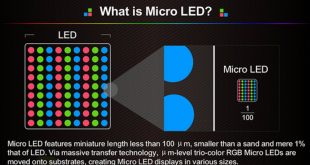Related Articles
Introduction:
In an era marked by escalating security threats and geopolitical tensions, the demand for robust protective solutions remains paramount. The global ballistic protection materials market stands as a bulwark against these challenges, playing a pivotal role in safeguarding individuals, assets, and infrastructure worldwide. Let’s delve into the dynamics of this essential market and its trajectory for the future.
Shields Up: Market Size and Growth Potential:
The global ballistic protection materials market is poised for substantial growth, with its value projected to soar from USD 15,330.8 million in 2023 to a staggering USD 31,135.2 million by 2033. This exponential expansion, driven by a robust CAGR of 7.4%, underscores the escalating demand for advanced protective solutions in an increasingly volatile world.
The Global Ballistic protection material market is having robust growth due to the military and defence sector standing as the primary consumer of ballistic protection materials, commanding a significant portion of the market share. Globally, nations are prioritizing the modernization of their military assets, fuelling demand for upgraded body armour, vehicle armour, and aircraft armour, thus driving the need for advanced ballistic protection materials. Similarly, law enforcement agencies and private security firms are contributing to this demand due to ongoing concerns regarding crime rates and terrorism threats.
Factors contributing to this growth include:
- Escalating Security Concerns: Rising cross-border tensions and conflicts across multiple regions are fueling the demand for enhanced ballistic protection solutions.
- Technological Advancements: Ongoing innovations in material science are yielding lighter, stronger, and more versatile ballistic protection materials, expanding their applicability across diverse sectors.
- Increased Defense Spending: Growing defense budgets worldwide, coupled with heightened military modernization efforts, are driving substantial investments in advanced armor solutions.
Consequently, there is a growing emphasis on equipping police officers and security personnel with effective protection against ballistic threats. Ongoing research and development endeavours have resulted in the creation of innovative ballistic protection materials boasting improved performance attributes, such as lightweight properties and enhanced ballistic resistance. Utilization of technologies like nanotechnology, advanced fibres, and composite materials is increasingly prevalent in the production of high-performance Armor solutions.
Unveiling the Armor: Key Players and Materials:
One of the primary drivers for the global Ballistic protection material market is the innovations in armor material and technology. Soft body armor worn for ballistic protection of the torso and extremities is meticulously developed to adhere to stringent standards and specifications, ensuring optimal performance and reliability against ballistic and fragment threats. The primary objectives for ballistic protection equipment include preventing projectile penetration, minimizing blunt trauma to the body upon ballistic impact, ensuring thermal and moisture comfort, as well as maintaining lightweight and flexible designs to preserve wearer mobility.
Transparent ballistic protection devices utilize materials such as glasses, glass ceramics, single and polycrystalline ceramics, and polymer composites. Glass ceramics, which offer a cost-effective and versatile alternative to traditional transparent ceramics, are generally characterized by superior hardness, stiffness, toughness, and strength compared to conventional glasses. Additionally, they can be tailored to be either transparent or opaque based on the specific requirements of the protective system.
The ballistic protection materials market boasts a diverse array of materials and manufacturers catering to various needs. Key materials and their applications include:
- Aramid Fibers: Notably, aramid fibers like Kevlar remain in high demand due to their exceptional properties, including lightweight construction and superior strength.
- Ceramics: Advanced ceramics offer unparalleled ballistic protection, particularly in lightweight armor solutions.
- Composites: Composite materials, combining different elements like fibers and resins, offer a unique blend of strength, flexibility, and weight savings.
- Polyethylene (PE) and Steel Alloys: These materials find extensive use in both soft and hard armor applications, providing robust protection against ballistic threats.
Geographical
North America stands out as the dominating region in the Ballistic protection material market. The forecast period anticipates significant growth in the ballistic protection materials market across key regions including North America, Asia Pacific, and Europe, with particular emphasis on the USA and China. This growth is primarily attributed to the growing focus on personal safety, augmented military and defence spending, and continuous technological advancements.
In 2033, North America is poised to maintain its dominance in the ballistic protection materials market, capturing a substantial market share of approximately 37.7%. Within this region, the United States is anticipated to lead the industry, with an estimated industry value reaching an impressive US$ 11,289.8 million by the same year. The dominant position of North America is anticipated due to its robust defence sector and substantial investments in Research and Development endeavours.
Meanwhile, the Asia Pacific region is poised for substantial growth, fueled by the increasing defence budgets of nations such as India and China. Meanwhile, China is expected to emerge as a significant player in the market, projected to achieve a valuation of US$ 4,880.5 million by 2033. Additionally, the demand for ballistic protection materials in India is forecasted to surge at a notable compound annual growth rate (CAGR) of 9.3% through the year 2033, underscoring the region’s growing emphasis on security and defense initiatives.
Beyond the Battlefield: Applications of Ballistic Protection Materials:
In the global Ballistic protection material market, among the several segments end-use industries such as military and law enforcement agencies hold the largest share. Defence organizations, such as military forces and law enforcement agencies, typically allocate significant procurement budgets for acquiring ballistic protection materials. These budgets allow them to invest in top-quality protective gear to safeguard the safety and effectiveness of their personnel in combat scenarios. Operating within stringent safety standards and regulations, the defence sector requires advanced ballistic protection materials that not only meet but exceed these requirements.
Consequently, defence agencies often serve as early adopters of state-of-the-art technologies and materials in the realm of ballistic protection. With applications ranging from body armor for soldiers and ballistic helmets to vehicle armor, fortifications, and protective gear for law enforcement personnel, ballistic protection materials see extensive use in various defence-related domains. This broad spectrum of applications ensures a steady demand for such materials within the defence sector.
While military applications constitute a significant portion of the market, ballistic protection materials find diverse applications across various sectors:
- Law Enforcement: Bulletproof vests, helmets, and shields are indispensable for ensuring the safety of law enforcement personnel in high-risk scenarios.
- Civilian Security: Armored vehicles and personal protective gear are increasingly sought after by civilians seeking enhanced safety and security.
- Aerospace and Infrastructure: Ballistic protection materials play a crucial role in securing aircraft, buildings, and critical infrastructure against potential threats.
Industry
The leading manufacturers of ballistic protection materials include 3M, ARGUN s.r.o, Armor VCI, Central Lake Armor Express Inc., Condor Outdoor Product Inc., Dupont, ELMON SA, Engrade body armor, ESPANOL, Hard shells U.S., Honeywell, Kavro soldier protection, MARS Armor, MKU Limited, NT Cera, Ballistic Protection group, Rochling, Seyntex NV, Stanford advanced materials, U.S. Armor Corporation and Others.
Honeywell International Inc., DuPont, TEIJIN Ltd., Rheinmetall AG, TenCate Protective Fabrics, Kolon Industries Inc., BAE Systems, Röchling Group, Morgan Advanced Materials Plc., Beijing Tongyizhong New Material Technology Corporation, Dexcraft, FY-Composites Oy, Final Advanced Materials, and ArmorSource LLC are prominent companies in the advanced materials and defense sectors. These firms specialize in the production and development of high-performance materials and protective solutions. Honeywell International Inc. and DuPont are well-known for their innovations in synthetic fibers and chemical products, while TEIJIN Ltd. and Kolon Industries Inc. are leaders in high-strength fibers and composites.
Rheinmetall AG and BAE Systems are major defense contractors providing advanced armor systems and protective gear. TenCate Protective Fabrics and ArmorSource LLC focus on producing protective clothing and helmets for military and industrial applications. The Röchling Group and Morgan Advanced Materials Plc. are recognized for their engineering and production of specialized plastic and ceramic materials. Beijing Tongyizhong New Material Technology Corporation, Dexcraft, and FY-Composites Oy contribute to the composite materials industry, providing high-quality solutions for aerospace, automotive, and defense applications. Final Advanced Materials is noted for its expertise in high-temperature resistant materials and advanced ceramics. These companies collectively drive innovation and advancements in materials science, ensuring enhanced performance, safety, and reliability in their respective fields.
These prominent industry players are at the forefront of developing innovative materials and solutions to meet the evolving demands of the ballistic protection materials market. They continuously strive to enhance their products’ features, such as lightweight, durability, and ballistic resistance, to cater to diverse end-user requirements. Additionally, these companies actively engage in strategic initiatives like facility expansions, collaborations, and acquisitions to strengthen their market presence and stay ahead of the competition.
The Road Ahead: Challenges and Opportunities:
As the ballistic protection materials market continues to evolve, several challenges and opportunities lie on the horizon:
- Sustainability: Developing environmentally friendly ballistic protection materials will be crucial for promoting sustainable manufacturing practices and reducing ecological impact.
- Affordability: Balancing performance with cost-effectiveness is essential to ensure widespread accessibility of ballistic protection solutions.
- Technological Advancements: Continued innovation is essential to stay ahead of evolving threats and enhance the effectiveness of ballistic protection materials.
Conclusion:
Safeguarding Tomorrow through Innovation: In conclusion, the global ballistic protection materials market is poised for significant growth, driven by escalating security concerns and technological advancements. By embracing innovation, sustainability, and affordability, the market can play a pivotal role in fortifying defense capabilities and ensuring a safer future for all.
 International Defense Security & Technology Your trusted Source for News, Research and Analysis
International Defense Security & Technology Your trusted Source for News, Research and Analysis

